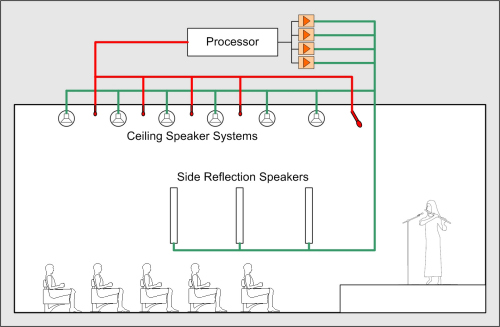

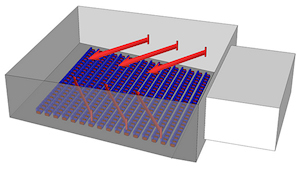
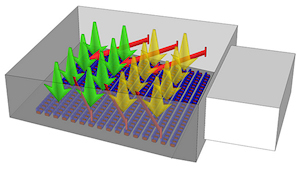
An electroacoustic enhancement system or a reverberation enhancement system is a system that is used to alter the sound field in a space using microphones, loudspeakers, and electronic circuits.
Electro-acoustical room enhancement systems are becoming more and more a real alternative. Rooms that suffer from unsatisfactory acoustics or rooms that need different sound characteristics for different purposes can be fixed for reasonable prices today. Digital signal processing and high-quality transducers enable electronic enhancement systems that create the nearly perfect illusion of an acoustic environment different from the real physical room.
The modern enhancement systems are not only capable of changing the reverberance but most of the other room acoustic properties like envelopment, level and clarity.
Speech and the various types of music have all different acoustical requirements to enable a perfect and satisfactory performance. But a room built for one purpose is later also limited to this type of performance. Since the processing power for digital signal processing is not the key problem anymore, the only answer to a multipurpose hall is electronic room enhancement. Microphones and loudspeakers are used at the front ends of the chain and highly sophisticated algorithms create a new sound field by transforming the microphone signals into a new complex signal structure.
The achievable quality of rooms with integrated enhancement systems depends not only on the quality of the system's alignment but to a large degree on the room's hardware itself, the basic acoustic properties. The beginning in the design process must be the room itself. There are always some parameters in the room that can be changed without a complete reconstruction to create a desirable basis for the enhancement system (to 'enhance' the enhancement system). A bad room can for sure be improved to a certain degree but in a room with good conditions a tremendous result can be created. The coloration can be reduced using equalization.

| ||
| typical room enhancement system | ||
 |
 |
 |
| regular room | 'artificial' side reflections | 'artificial' reverberant field |
Problems with directional stage microphones in non-regenerative systems
proximity effect, different off-axis frequency response, different off-axis pick-up levels
pick-up area on stage must be defined
walking in and out of the preferred area on stage will change the sound
 |
 |
 |
| cardioid | supercardioid | hypercardioid |
Energy deficits in non-regenerative systems
if additional energy is too low:
because of insufficient gain before feedback the reverberation is not effective enough
it doesn‘t combine with the natural acoustic, sounds like an effect it cannot increase EDT and cannot decrease C80
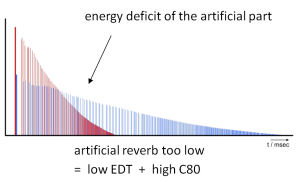 |
Energy deficits in regenerative systems
if additional energy is too low:
because of insufficient gain before feedback the created reverberation is not effective enough
it doesn‘t combine with the natural acoustic, is not audible, it cannot increase EDT and cannot decrease C80
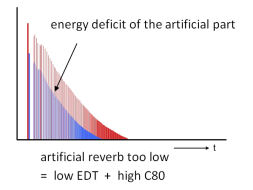 |
Early Lateral Energy
the most decisive part in enhancement systems
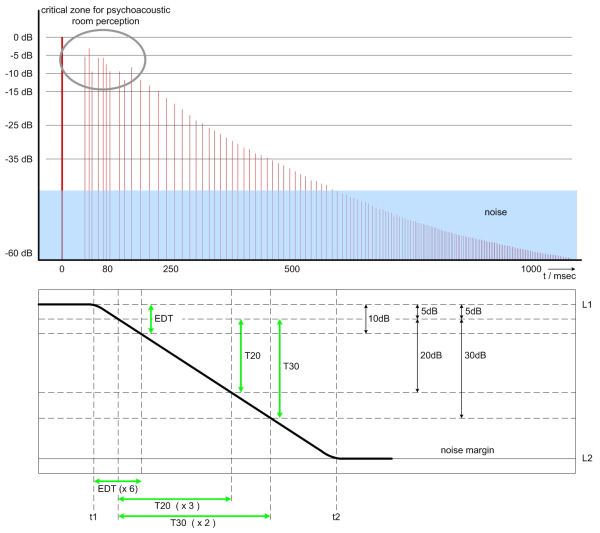 |
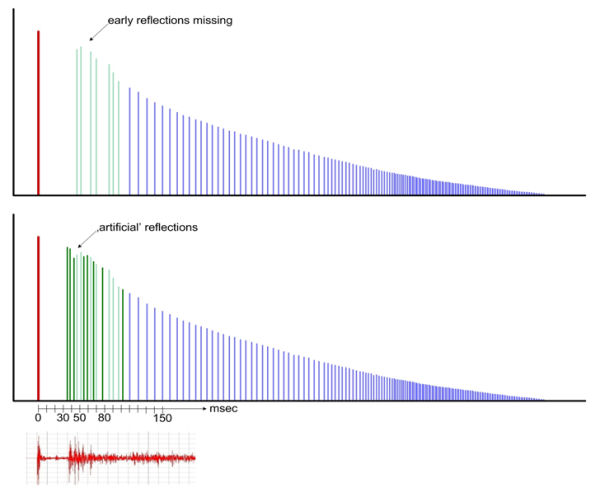 |
But reflections react like any other sound and follow the inverse square law !
The longer the travelling path of the reflected sound is, the smaller is the relative level decrease per distance.
A regular loudspeaker with 6dB level reduction per doubling, imitating the later part of a reflection will create not the same energy distribution !
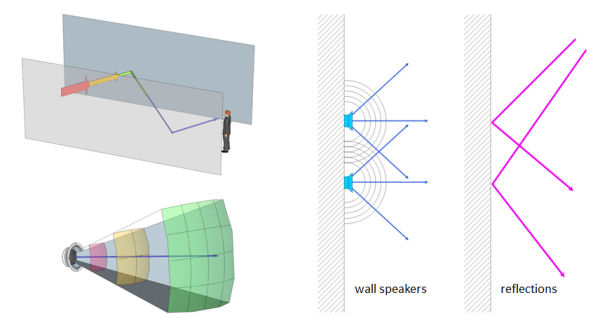 |
| travel path of a reflection, inverse square law of a regular loudspeaker (left) different behaviour of loudspeaker and 'real' reflection (right) |
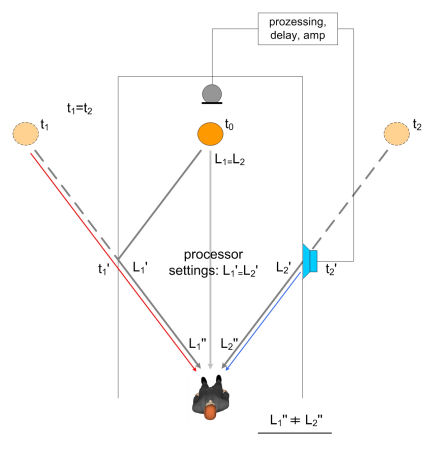 |
| With equal SPL level at the wall the reflection is considerably louder than the loudspeaker |
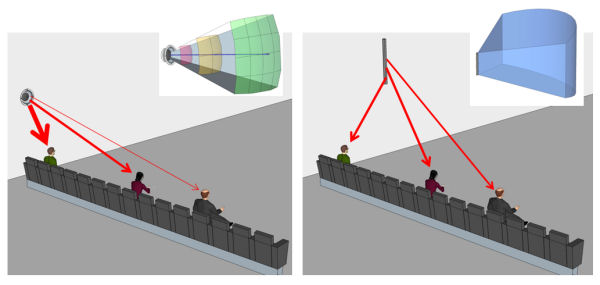 |
| Line source speakers can improve the situation drastically - but are still not perfect !
|